By Ernest Hovingh
Milkers on today's dairy farms are not only expected to perform a lot of tasks while harvesting milk, but they should do them well, consistently, and often for an extended period of time. These tasks may include getting the cows calmly but efficiently into the parlor, providing good stimulation and effective cleaning of the teats, and properly attaching the milking unit to each cow. After milking, the cows need to be correctly post-dipped and prompted to exit the parlor to make room for the next group of cows.
In the process of doing all these tasks, problems with the in-parlor milking equipment may sometimes be overlooked. So, in addition to training milkers to do all the aforementioned tasks, milkers should also be trained to assess the basic condition and function of the milking equipment.
Some of the most common things that they should be looking for include blocked air bleed vents, cracked pulsation (short air) tubes, twisted inflations, and pinched hoses. While this may seem like an extensive list of things to check, once a milker is trained to be observant for these things, it can become second nature and does not require a lot of dedicated time or effort.
Air vents in the claw or in the inflation are intended to create a deliberate 'leak' of air into the claw, to promote milk flow away from the claw and teat, and into the milk hose. These vents are designed to allow a specific amount of air into the claw, and if they are clogged with hair, bedding and/or manure, they will not function as intended. The milkers should not only understand the importance of having clean/patent vents, but they should also know where they are located, and how to check to be sure they are functioning. A small hiss of air can usually be heard being admitted into a functional vent, but if they are not sure if a vent is functioning properly, a small piece of a glove can be held up to the vent. If the vent is open, the glove should 'stick' to the vent (Figure 1).
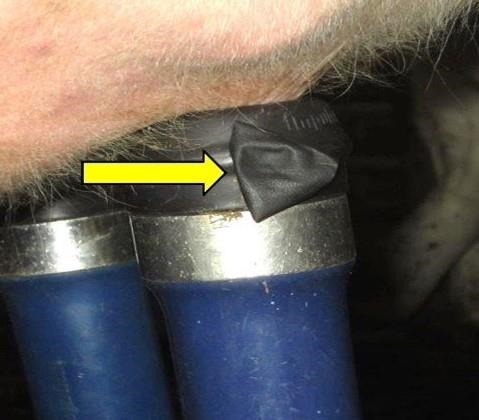
Figure 1. The yellow arrow shows a piece of a (black) milking glove sticking to a vent in the mouthpiece of an inflation, indicating that the vent is not clogged/blocked.
The proper tools should be available so that the milkers or parlor manager can clear a clogged vent or replace it with a new or cleaned vent. This should ideally be done as soon as a problem is discovered. At the very least, if a blocked vent is discovered by a milker, a note should be made on a white board, or a text sent to the parlor manager, alerting her/him to this problem.
It would seem that a cracked short air tube would be something that should be very obvious to a milker, but obviously worn, dry-rotted, and/or cracked tubes are still often discovered in parlors. (Similar problems can occur in the pulsation hoses, especially where they connect at the claw.) These defective/leaking tubes (Figure 2) will interfere with the normal movement (pulsation) of the liner, with the result of not achieving good milk flow out of the teat, since the vacuum can’t build up properly between the liner and the shell. This may result in excessive milk remaining in the quarter which has the cracked/broken short air tube, which may in turn predispose the cow to getting mastitis in that quarter. Depending on how the milker is positioned on each cow, a crack in the short air tube may not always cause abnormal pulsation, so sometimes this will be a 'hit and miss' scenario. Milkers should be checking to see that the short air tubes are in good condition when they wash the milking clusters at the end of milking, but they should also be listening for vacuum leaks and looking for cracked tubes while milking. Proactively changing the short air tubes on a regular schedule should also be part of the parlor maintenance routine.
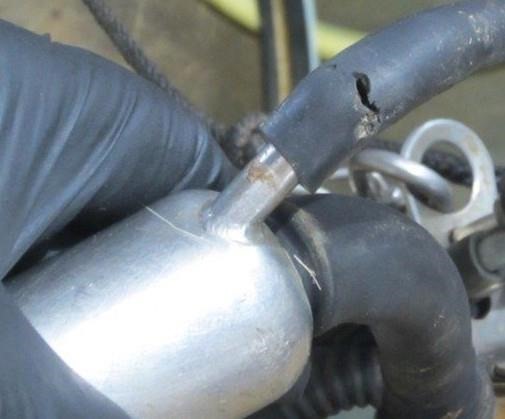
Figure 2. Cracked short air (pulsation) tube.
Milkers should know where they can get new short air (pulsation) tubes, and that they should replace them immediately when they observe a problem.
I'm surprised at the number of milkers (and even parlor managers!) that do not know the importance of having the liners/inflations properly aligned within the shells. This could happen because milking equipment companies often provide a service of placing new liners into an additional set of shells on a regular schedule so that the milkers simply replace the shell and inflation as one unit. While this is a convenient service, it may mean that milkers and/or parlor managers never go through the process of replacing inflations, and so they may not even be aware of the importance of aligning the marks on the inflations at the top and bottom of the shell.
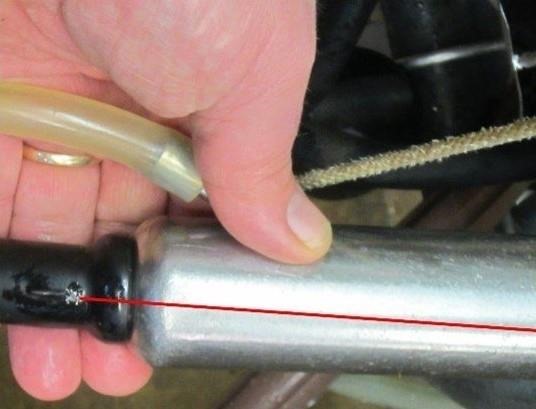
Figure 3. Inflation (liner) misaligned in stainless steel shell. Red lines indicate location of alignment marks on inflation, above and below the shell.
Whether it is a round, triangular, square, or otherwise-shaped liner, having them aligned in the shell is critical to having them go through a proper milk:massage cycle. Even a slight (1/8 or more) twist in the inflation (Figure 3) can result in the undermilking of that quarter, since the inflation can't open up properly. This means that there can be excessive milk left in the quarter, or the milking unit may stay on for a long time. Both of these scenarios can result in an increased risk of mastitis developing. Milkers should be checking to see that the alignment indicators on the inflations are lined up properly at least at the beginning of each milking. Milkers should know that in many situations, they may cause mis-alignment of the inflations by aggressively removing the units from the jetter cups, and/or even with a well-intentioned aggressive twisting of the mouthpieces while cleaning them with a towel. Even with shell and inflations that have indexing (alignment) notches, there can be some very obvious twisting problems with these units as well (Figure 4).
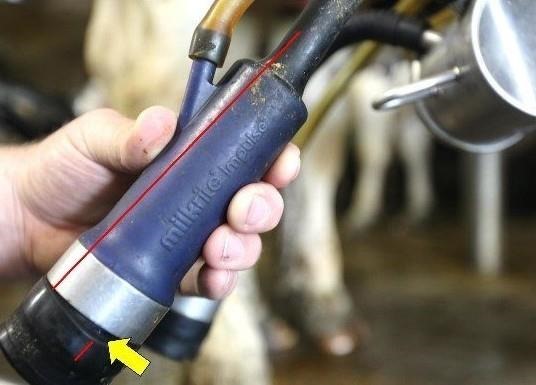
Figure 4. Inflation (liner) misaligned in plastic shell. Red lines indicate location of inflation alignment marks, above and below the shell. Yellow arrow shows obvious gap between liner and shell.
Pinched (milk/pulsator) hoses can have a severely reduced carrying/flow capacity, whether the pinching is a temporary or permanent condition. This may happen if a hose is repeatedly pinched by a (vacuum) shut-off valve, if a hose is too short or too long, if 'zip-ties' are applied too tightly (especially to pulsator hoses), or it may occur as they lose their shape as they age (Figure 5.). Milkers should be trained to watch for any restrictions/deformations in any hoses and immediately report them to the parlor manager. Regular inspections of all hoses (every 2-4 weeks), and a regular replacement schedule are useful to prevent problems, and/or allow for early identification.
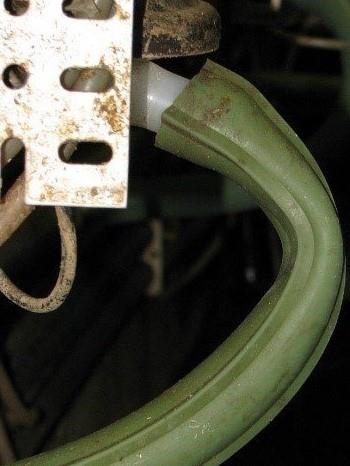
Figure 5. Kinked milk hose.
Although there are other equipment maintenance and failure issues to address (eg. pulsators), these are a few of the more common ones which milkers can and should monitor, and which can affect udder health and milking performance. Training milking crews and parlor managers on the importance of these issues, and how to solve them, will help to prevent significant problems from developing or persisting.
Source : psu.edu